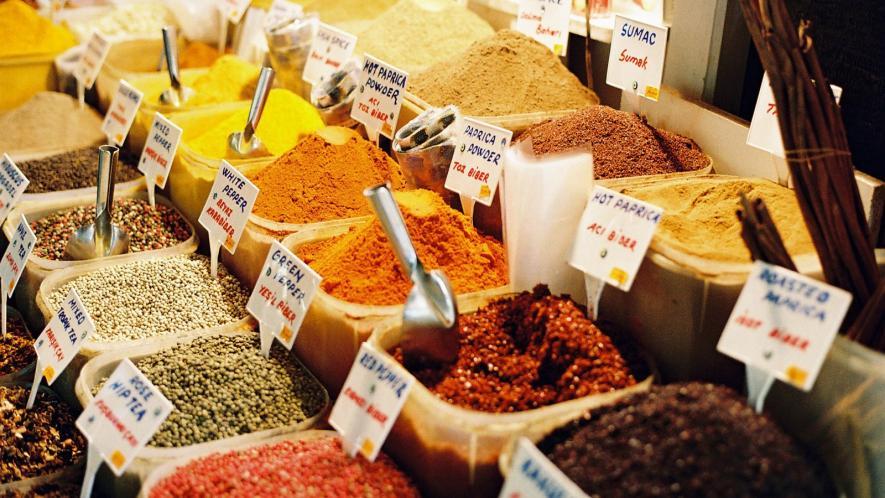Food Price Spike: How Farmers’ Protest Saved the Country

Representational Image.
The current upsurge in prices in India is led by food prices. In July 2023, while retail inflation was 7.44% (over July of the previous year), food price inflation, which covers all food items, including foodgrains, vegetables, milk products and such like, was 11.5%. Food price inflation came down a little in August to around 10%, largely because of some supply management measures adopted by the government relating to vegetables like tomatoes. This was responsible for bringing down the overall retail inflation rate to 6.83%; but obviously food price inflation, and with it, overall retail inflation, continues to remain a serious problem.
It is not just in India that food prices are rising sharply. This is a global phenomenon characterising not just the Third World but even the advanced capitalist countries. The usual explanation attributes it to the scarcity caused by the Ukraine war, but while the Ukraine war can, in principle, be such a cause of inflation by generating scarcity, the current rise in food prices is, if at all, more in anticipation of such a scarcity than a result of any actual scarcity.
There is plenty of evidence from all over the world which shows that even before any actual scarcity has occurred, profit-margins have increased in the retail foods sector, which indicates a jacking up of prices by monopolists in anticipation of scarcity. The same is true in India, because of which many are talking about “inflationary expectations” being at play, which drive up actual prices because of a rise in expected prices.
But inflationary expectations can play a role only when, despite there being no actual shortage, the actual supply situation is not characterised by great abundance. After all, when there are huge foodgrain stocks lying around, prices are not jacked up by suppliers in anticipation of inflation: if such stocks are held by the government, suppliers know that they would be released to consumers at prices that would negate any jacking up.
Even if the stocks are held by private sellers, their priority would be to bring down the level of stocks rather than jack up prices. What is more, even if some suppliers jacked up prices, others would see in it an opportunity to take away customers from these sellers and reduce their levels of stocks. “Inflationary expectations”, in other words, play a role only when the underlying situation is one where supplies are not too comfortable.
This has been the case with the world foodgrains market for quite some time. The annual per capita world cereal production, for instance, (taking a triennium average divided by mid-triennium population) was 355 kg for the triennium 1979-80 to 1981-82 (or 1980-82 for short); it fell to 343 kg by 2000-02, and even over the period 2016-18 it was only 344 kg.
Moreover, a rising proportion of cereal output 2002 onward has been diverted to ethanol production, which means that the per capita availability of cereals for consumption purposes for the world’s population must have shrunk.
If this shrinking availability did not give rise to any persistent and significant inflationary pressures till now, the reason lies in the fact that under the neoliberal regime there has been a drastic squeeze on the purchasing power of the working people, especially in the Third World. There has been, in short, a precarious balance maintained between shrinking availability and shrinking demand because of income compression imposed on the working people. Because of this even while poverty and undernutrition have increased greatly in the neoliberal era (though this fact is usually sought to be concealed by the numerous “poverty studies” under the aegis of the Bretton Woods institutions), this deprivation has generally not taken the form of an inflationary squeeze. There have been occasional upsurges in food prices, but these have been “controlled” by compressing the incomes of the working people, which again restores the precarious balance between demand and supply in a non-inflationary manner.
Exactly a similar situation has prevailed in India. In 1991, the per capita availability of foodgrains was 510.1 gm per day. This had slightly gone down to 501.8 gm per day in 2019-20. In the next two years, government distribution of foodgrains during the pandemic, which was made possible through a decumulation of government foodgrain stocks, raised the figure to 511.7 gm and 514.6 gm, respectively, but clearly over the entire neo-liberal period, per capita availability of foodgrains, according to official data, scarcely increased. There was, in other words, a precarious balance between demand and supply which was maintained without any significant and steady increase in prices because the purchasing power in the hands of the working people was kept adequately squeezed through the modus operandi of a neoliberal regime.
This precarious balance can be upset at any time, giving rise immediately to a rise in foodgrain prices and hence to inflationary expectations that compound the problem, until under capitalist conditions a squeeze on purchasing power is further tightened through the so-called anti-inflationary policy adopted by the government.
The Ukraine war and the global rise in foodgrain prices provides the context for the generation of inflationary expectations in India as well. This is further reinforced by the fact that the foodgrain stocks with the government, while higher than what is required to manage the public distribution system, is lower than what it has been for some time.
August 22, for instance, the total foodgrain stocks with the Food Corporation of India were 52.335 million tonnes, consisting of 24.296 million tonnes of rice and 28.039 million tonnes of wheat. These stocks were higher than the operational stocks required for the public distribution system but were lower than at any time during the preceding six years, which would have given a signal to speculators to hoard grains and push up the open-market price.
This running down of stocks was itself a result of an extraordinarily unwise policy of the Narendra Modi government, which thought it could bring down foodgrain inflation in the open market by disgorging the stocks it held. The speculators just bought up what the government disgorged, so that inflation continued as before, while government stocks were gratuitously run down, thereby further strengthening inflationary expectations and hence the inflationary process. And, of course, when foodgrain prices rise, fuelled by inflationary expectations, this tends to have the general impact of raising prices of other food items as well.
There are two alternative ways of combating the food inflation that is occurring. One is through monetary policy, raising interest rates and tightening credit in general. In the old days, on such occasions, only the credit given to the foodgrain sector was tightened, under a policy called “selective credit control”, But in the neo-liberal era this has fallen into disuse, because of which interest rate policy is used, which necessarily hurts the viability of small enterprises and causes significant unemployment. This way of controlling food price inflation, in short, entails the creation of unemployment; and this, alas, is the generally favoured panacea for inflation under capitalism.
The other way of controlling inflation is to widen the reach of the public distribution system so that government stocks are not disgorged in the open market, but consumers are taken off the open market and government stocks are distributed among them, so that speculators cannot have access to these stocks.
Of course, enlarged sales through the public distribution system will have to be followed by enlarged procurement by the government through the Food Corporation of India, if the system of food distribution is to survive; and any way, the government is planning to procure 52.1 million tonnes of rice in this year’s kharif season. This is an absolutely essential measure for beating the current food inflation.
The extraordinary silliness of the measures that were sought to be put in place through the three infamous farm laws now becomes obvious. If those measures had not been withdrawn because of the agitation of the farmers, then procurement would have been privatised and the government would have had no means of combating inflation which would have continued unabated under the aegis of the private sector.
Fortunately, the farmers saved the country, and public procurement of foodgrains continues to prevail; and the government still has a weapon in its hand to combat inflation without generating mass unemployment.
Get the latest reports & analysis with people's perspective on Protests, movements & deep analytical videos, discussions of the current affairs in your Telegram app. Subscribe to NewsClick's Telegram channel & get Real-Time updates on stories, as they get published on our website.
























